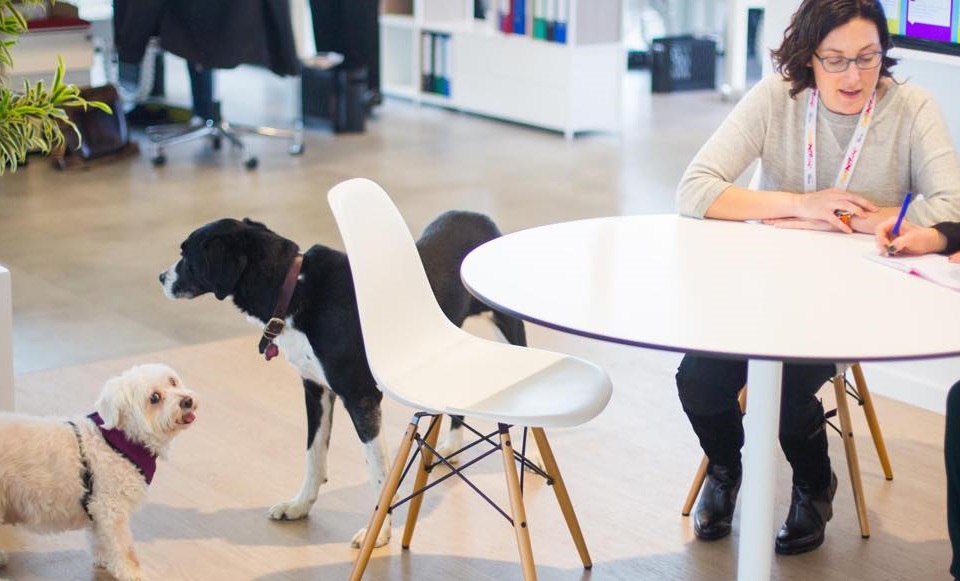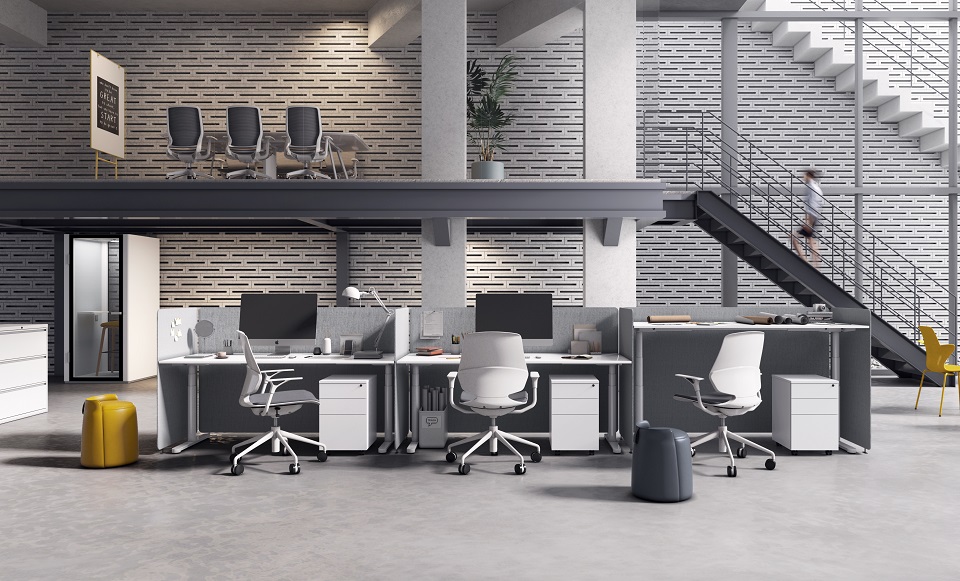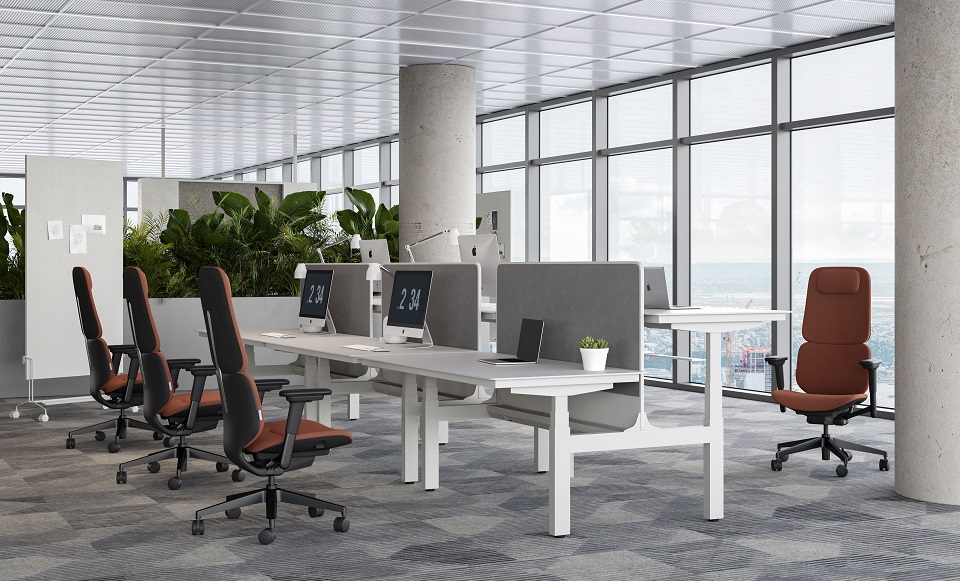
From Mark Zuckerberg to Tim Cook, many popular tech company leaders have praised open, communicative workspaces. The goal of an open office environment is to increase collaboration and communication, reduce construction costs, break down hierarchical barriers, and create a collegial workplace culture, but it also has some drawbacks that very some people cannot adapt to, just like my feelings, and can feel uncomfortable.
A survey of more than 600 executives and 600 employees conducted by the Oxford Economics Institute revealed that the open office is a greater threat to productivity and employee mindset than most executives realize and that most do not have strategies in place to deal with these issues.
Contrary to what bosses think, many employees report a lack of privacy, high levels of noise pollution, and overexposure to distracting conversations or discussions in many informal meetings. There are also reports of "sexism in the environment" for women working in open offices who feel overexposed and scrutinized.
Another study found that people who worked in open offices took nearly two-thirds more sick days than those who retained more privacy and were more unhappy, more stressed, and less productive.
However, the symbolism of open-office planning is too powerful and inexpensive for many companies to give up. As a result, the open office environment has become a controversial situation. We will discuss the benefits of open-office planning, how it affects employee productivity and psychology, and how it can be used wisely to make the most of open-office planning.
Enhance Communication
The open office space is easy to form spontaneous brainstorming and informal group discussions, and colleagues are free to collaborate with each other, exchange ideas, and seek help when needed. The fluid communication environment enables them to build good relationships with colleagues, producing a pleasant and cordial atmosphere.
Enhanced Cooperation
This is the biggest benefit expected from an open workplace. Although there are many web-based tools to help us collaborate in the workplace, face-to-face communication is still more productive. Junior employees are more likely to approach senior management and generate collaboration. Employees will feel equally respected and valued. And everyone in the office will feel part of the same team, so innovation in collaboration between employees and departments usually increases.
Cost Reduction
Open-plan offices allow more employees to work in a single space that is much more cost-effective in terms of initial setup, heating, air conditioning, and cleaning. Open spaces can also be easily reconfigured as needed.
Emotional Health Issues
Because of the increased distractions and lack of privacy associated with open office plans, they can leave some employees with the psychological burden of maintaining their "productive work image," always being careful and cautious, and in a state of chronic stress, anxiety, and suspicion. In addition, open offices are designed to increase social interaction, which can make introverts feel especially anxious and exhausted by the inevitable presence of others. The open office has the potential to cause introverts to suffer from panic attacks or other stress-related disorders.
Sexism
One of the many unique challenges women face in the workplace is that many men (and some women) view a woman's appearance as a proxy for her trustworthiness. Open offices increase the physical visibility of employees, thus forcing women to focus on their appearance. At the same time, they are judged more, subjected to a great deal of scrutiny, and invariably put under tremendous pressure. To make matters worse, the open office seating layout creates plenty of opportunities for deniable sexual harassment.
Distraction
People are very easily distracted in an open environment, you hear a lot of conversations and noises around you, and you start to notice the annoying habits of your colleagues. At the same time, open-plan offices force you to multitask at the same time, because every moment you are stimulus-driven to focus on the movement of the people around you. This is a burden on the concentration mechanisms that our bodies themselves perform. According to research, over the long term, the brain shows weaknesses in cognitive control, motivation, emotion regulation, working memory (the ability to store relevant information while performing a task), and long-term memory (the ability to store and recall information over an extended period of time).

Gender Culture Training & Code Of Conduct
The high walls built by the grid cannot address the root causes of workplace bias issues, and cultural change and training can address the root causes. Conduct gender culture training, which will help employees recognize any biased preconceptions they may have and how to address them. Set policies that clearly define unacceptable behavior in a code of conduct or employee handbook. In this way, both men and women are clear about what constitutes problematic behavior. Anyone who has experienced discrimination in an office environment can speak up and bring the issue back to senior management.
Optimize Open Space Design
Workplaces should have a variety of spaces, both enclosed and open, shared and separate. Today, workplace strategists advocate that the office environment should be aligned with the strategic goals of the business: to provide space where people can do their best work. Introducing private space within an open office environment allows employees and departments to choose the space that best suits them as they complete their different tasks. From focusing on individual tasks in a quiet room to collaborating in a crowded room to recharging in a meditation area - so they can stay focused, maintain privacy, and feel good about themselves. At the very least, acoustic insulation and opaque partitions that allow for natural light, ensuring that your office has a sound barrier surrounding noisy office equipment, and installing carpeting, ceiling, and paneling systems that help absorb noise are simple and affordable additions to integrate into your office that will also go a long way.
Communicate To Achieve Collaborative Productivity
This is the most critical part of developing your open office plan. It all comes down to collaboration and productivity. Engage your employees in discussions about how your company understands collaboration and productivity. Have more coaching conversations with employees who report to different supervisors to help them work through unclear expectations and priorities.
Book Meeting Rooms
Some open office environments contain meeting rooms (or quiet cubicles) that people can use, so escaping distractions there can be an option. Try booking a meeting room for an hour or two; colleagues will assume that the room being booked needs privacy and that you can work without being disturbed for the duration.
Put On The Headphones
If you can't stand the chatter of your colleagues, try wearing noise-canceling headphones at work. You can also find a website with a variety of white noise and ambient sounds as background music to reduce the noise around you to cause disturbance and impact yourself.
Fresh Air & Exercise
Fresh air and exercise can go a long way in relieving the stress you accumulate in an open office environment. Go out for a walk around the block during your break, go to your favorite restaurant, or have lunch on a park bench. Exercise can also help boost your mood. Take a brisk walk or even a run during your outdoor break. Getting away from your office surroundings for a while can provide perspective and relieve stress.
If an open office program is to be most effective and advantageous, it requires managers to take into account the culture of the organization, the needs of employees and the nature of their work, and employees to actively and effectively adapt and adapt to their own circumstances, so that the open office program can lead to positive productivity.

Jun. 21, 2023

Jun. 20, 2023

Jun. 16, 2023

Jun. 15, 2023

Daniel Yao
Yose Lang